Art, history, music, science, nature, haute couture….. Whether you are planning a trip to Paris this summer or just passing through the capital, be sure to check out these very original exhibits!
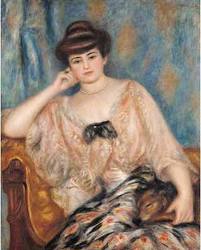
- If you are interested in French artistic life from the Belle Epoque to the Twenties, come see portraits of one of the most painted women of her time: Misia Godebska, at Musée d’Orsay’s exhibit: “Misia, Queen of Paris,” from June 12th through September 9th.
- The Galérie des Gobelins is presenting “La Tenture de Moïse” (The Moses Tapestry), based on works by Nicolas Poussin. This is the first time the Tapestry will be shown in its entirety since it was first created in the 17th century. The exhibit will run from May 22nd to December 1st.
- History buffs should see the exhibit about the Gauls at the Cité des Sciences et de l’Industrie where they will learn about the daily life, agriculture, and the social organization of these French ancestors. Through September 2nd.
- Visitors of all ages will love “Les Histoires de Babar” (The Stories of Babar) which celebrates the famous French elephant’s 80th birthday with this exhibit running through September 2nd at the Musée des Arts Décoratifs.
- “Rodin, la chair, le marbre” (Rodin, Flesh and Marble) will open June 8th
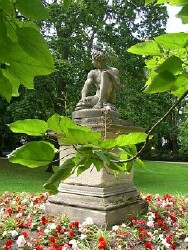 And if you’re an animal lover you won’t want to miss, “Beauté Animale” (Animal Beauty) at the Grand Palais which presents 130 paintings, drawings, sculptures, engravings and photographs of animals, from the Renaissance to the present in works by Courbet, Durer, Degas, Gericault, and others. Ends July 16th, so you have to hurry!
And if you’re an animal lover you won’t want to miss, “Beauté Animale” (Animal Beauty) at the Grand Palais which presents 130 paintings, drawings, sculptures, engravings and photographs of animals, from the Renaissance to the present in works by Courbet, Durer, Degas, Gericault, and others. Ends July 16th, so you have to hurry!
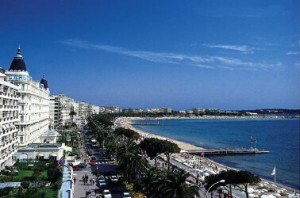
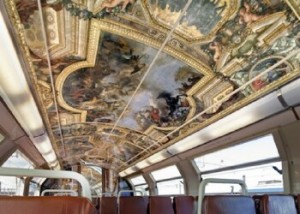
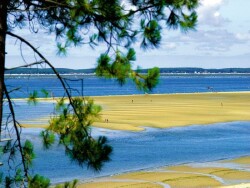 On the Atlantic coast not far from Bordeaux lies the beautiful seaside town of Arcachon, well-known for its oyster culture, its fishing harbor, and its bathing resort where sea winds mix with the fresh scent of pine trees from the nearby forest of the Landes.
On the Atlantic coast not far from Bordeaux lies the beautiful seaside town of Arcachon, well-known for its oyster culture, its fishing harbor, and its bathing resort where sea winds mix with the fresh scent of pine trees from the nearby forest of the Landes.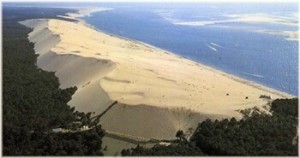
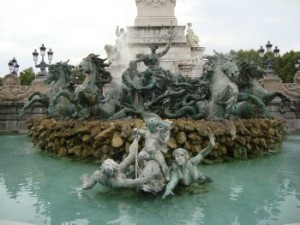
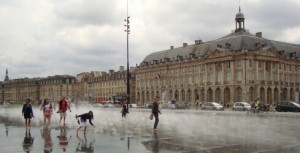
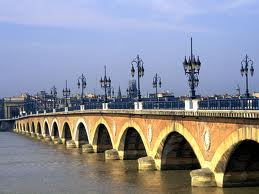 Part of the enchantment of the city of Bordeaux is its fascinating history. In addition to its excellent location on the Garonne River at the mouth of the Gironde estuary, its turbulent but compelling past may be summed up in three stages:
Part of the enchantment of the city of Bordeaux is its fascinating history. In addition to its excellent location on the Garonne River at the mouth of the Gironde estuary, its turbulent but compelling past may be summed up in three stages: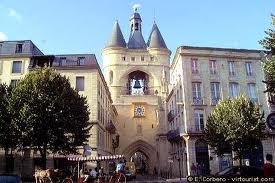
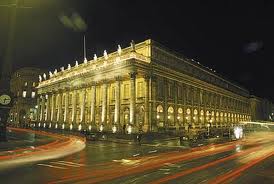
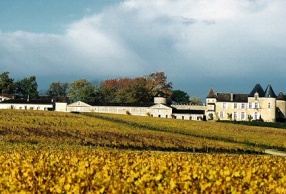 The best known vineyard in Sauterne region is the beautiful Chateau d’Yquem which once belonged to Eleanor, Duchess of Aquitaine. After she and King Louis VII of France divorced and she married Henry Plantagenet, the future King Henry II of England in 1154, the chateau came under British dominion until the end of the Hundred Years War in 1453, a most royal and British estate. Back under French control in 1593, the chateau has been improved and modified several times under the watchful eye of the Sauvage and Lur-Saluces families, and has produced award-winning wines over the centuries. Thomas Jefferson bought several cases in 1784, proclaiming it the best wine of Bordeaux. Today partially owned by the luxury marketing group LVMH, it possesses approximately 226 acres of vineyards, although not all are in production at any one time, allowing for elimination of elderly vines and replanting in fallow plots. The mix of the grapes is 80% Semillon and 20% Sauvignon Blanc, with none of the permitted Muscadelle. The grapes are harvested by hand in several different batches and fermented in oak, usually about three years per barrel.
The best known vineyard in Sauterne region is the beautiful Chateau d’Yquem which once belonged to Eleanor, Duchess of Aquitaine. After she and King Louis VII of France divorced and she married Henry Plantagenet, the future King Henry II of England in 1154, the chateau came under British dominion until the end of the Hundred Years War in 1453, a most royal and British estate. Back under French control in 1593, the chateau has been improved and modified several times under the watchful eye of the Sauvage and Lur-Saluces families, and has produced award-winning wines over the centuries. Thomas Jefferson bought several cases in 1784, proclaiming it the best wine of Bordeaux. Today partially owned by the luxury marketing group LVMH, it possesses approximately 226 acres of vineyards, although not all are in production at any one time, allowing for elimination of elderly vines and replanting in fallow plots. The mix of the grapes is 80% Semillon and 20% Sauvignon Blanc, with none of the permitted Muscadelle. The grapes are harvested by hand in several different batches and fermented in oak, usually about three years per barrel.